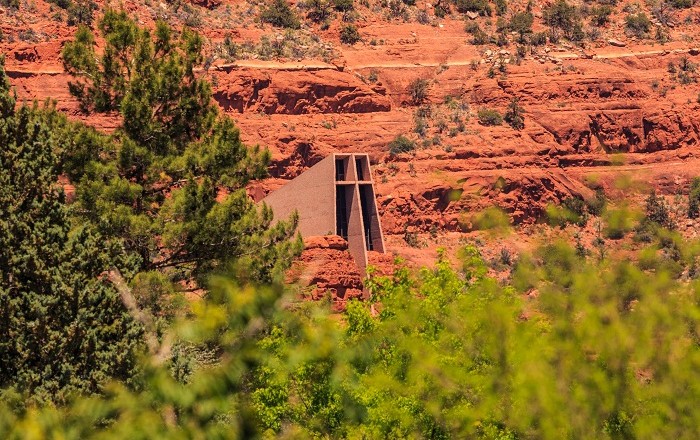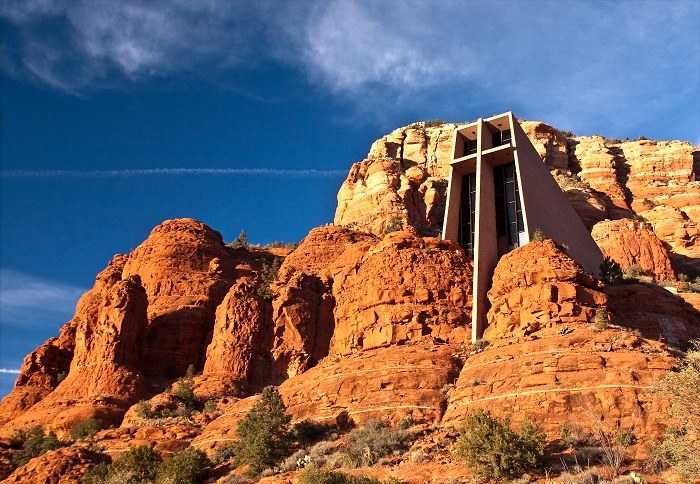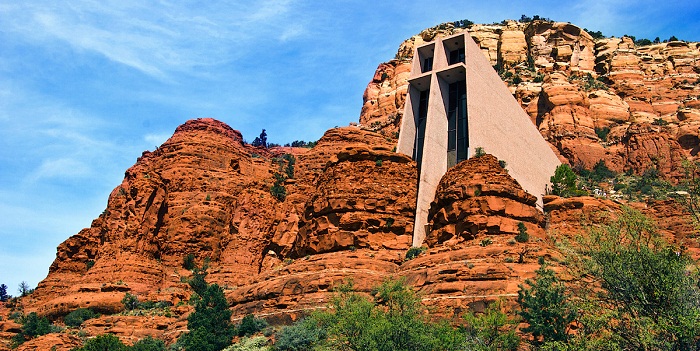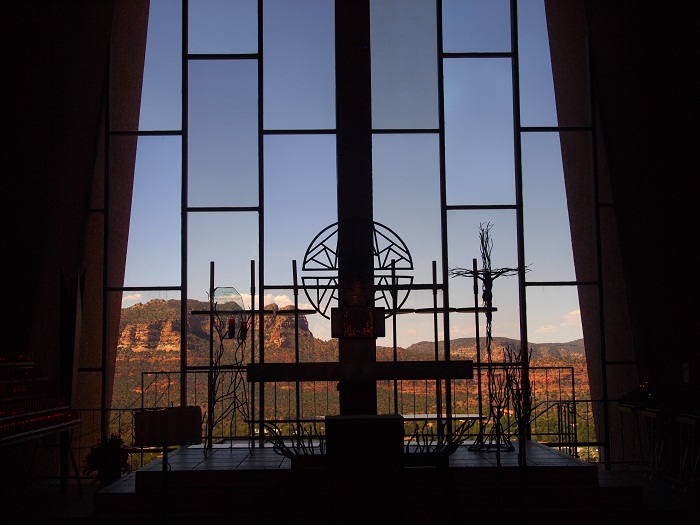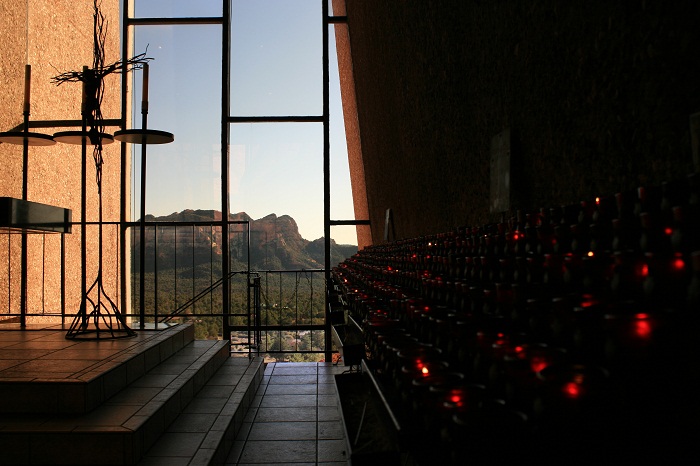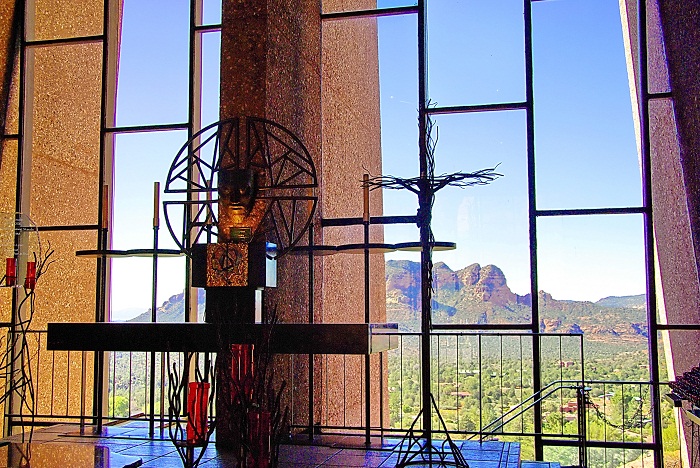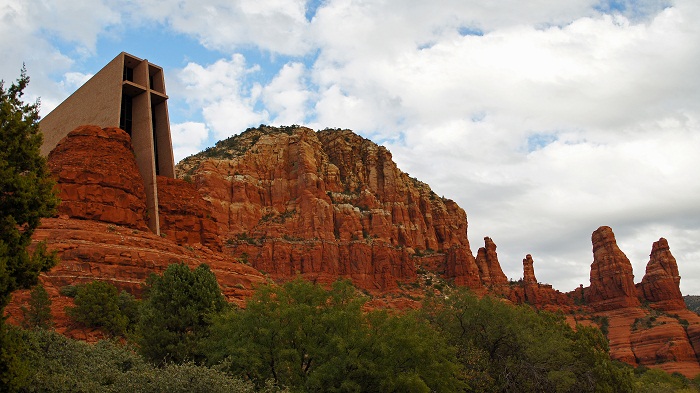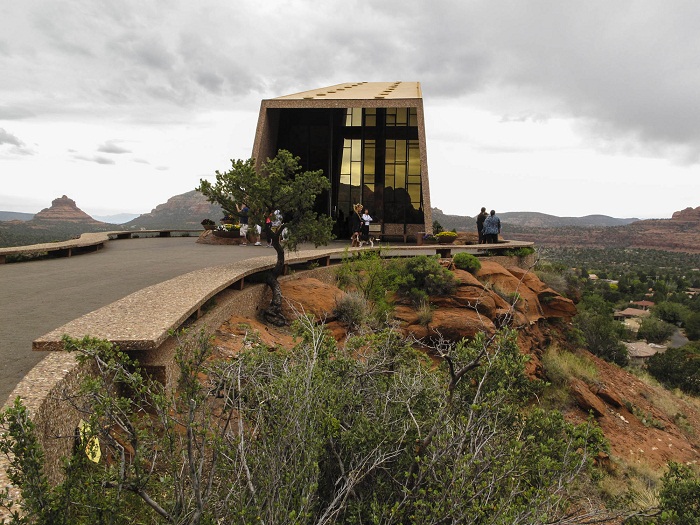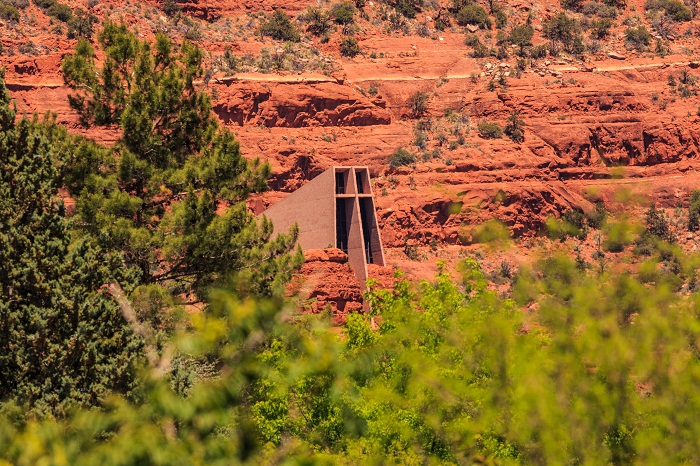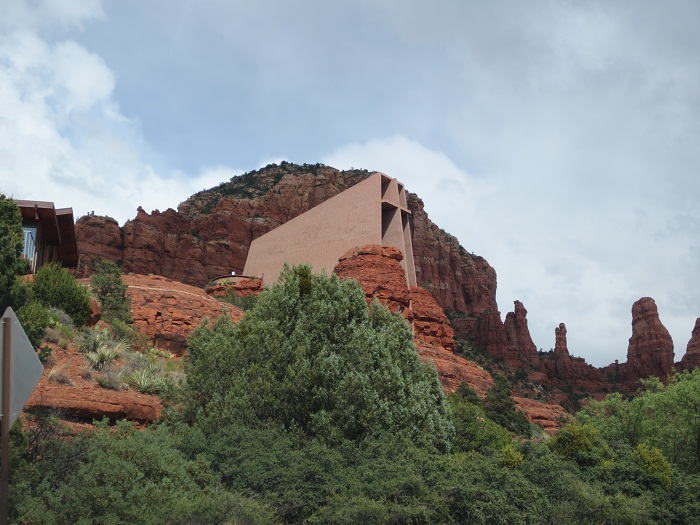The Chapel of the Holy Cross is a Roman Catholic chapel that was built in the red rock buttes of the city of Sedona, in the central part of the State of Arizona, within the southwestern part of the United States of America. As the religious building was created by the local sculptor Marguerite Brunswig Staude, who was a student of the notable American architect Frank Lloyd Wright, she actually got the inspiration in 1932 from the then newly built Empire State Building.
As she was seeing the surroundings from a certain angle, she noticed that a cross can be seen in the distance of the red rocks and as she was looking for a great place where she could build this architectural masterpiece, she certainly discovered the amazing place. There was one attempt to build it in Budapest, Hungary, however due to the Second World War the plan was aborted.
After a while, Richard Hein was chosen as a project architect, and the design was executed by architect August K. Strotz, both from the firm of Anshen & Allen. As the Chapel is built on Coconino National Forest land, the late Senator Barry Goldwater assisted with obtaining the permit for the construction, so that the construction would finally begin in 1954.
As it took 18 months to be completed, one of the remarkable and greatest attributes of the building is the striking giant cross that supports the structure of the glass, together with the rest of the building over a butte. Located on the southern side of Twin Buttes, the chapel is accessible just off of the main road to Sedona (Highway 179) on Chapel Road, and as there are no regular services in the church, it is in fact meant to be a place of reflection and meditation.
The interior of this religious temple is very simple, with nothing more than a few pews and an alter, so that attention will not be taken away from the spiritual inflection, physical block glass windows and large cross that emphasize the space.
On the periphery, benches hug the angular walls, whereas in the center, two rows of pews (seven on each side) provide the necessary place to pray and rest. The proof of the magnificence the Chapel has, was proven immediately one year after its completion, when the American Institute of Architects gave the Chapel its Award of Honor.
Nowadays, visitors are flocking towards this alluring architectural beauty to find peace and tranquility, and the architects of course to find an inspiration to create even more interesting, if not, similar masterpieces.

